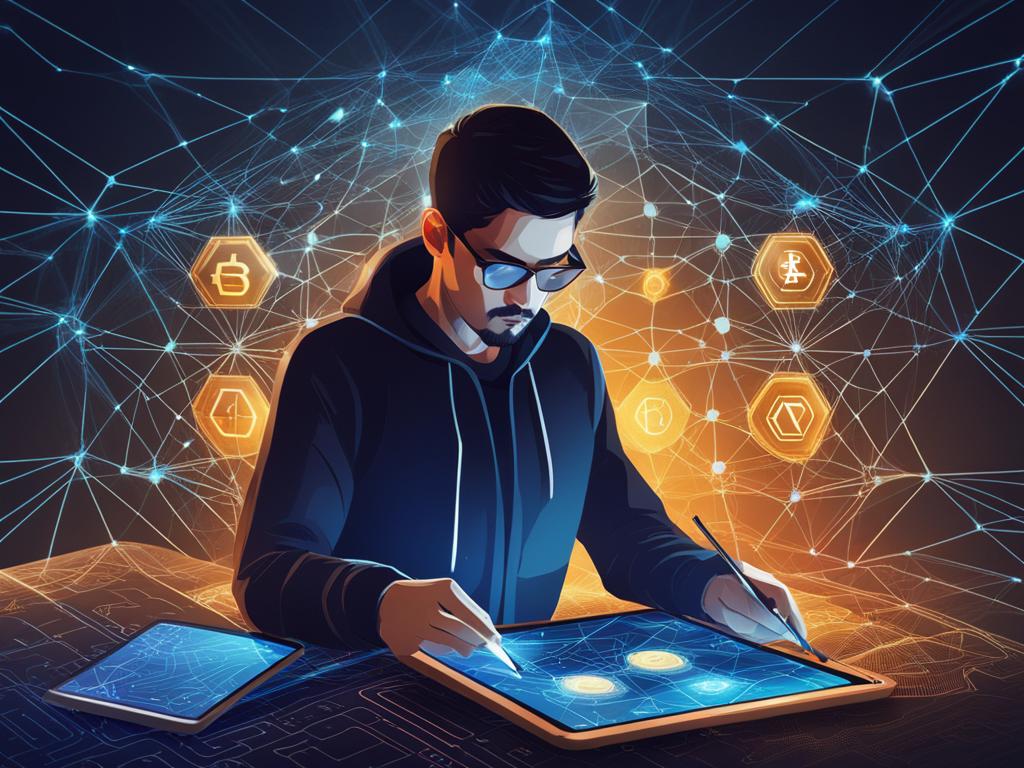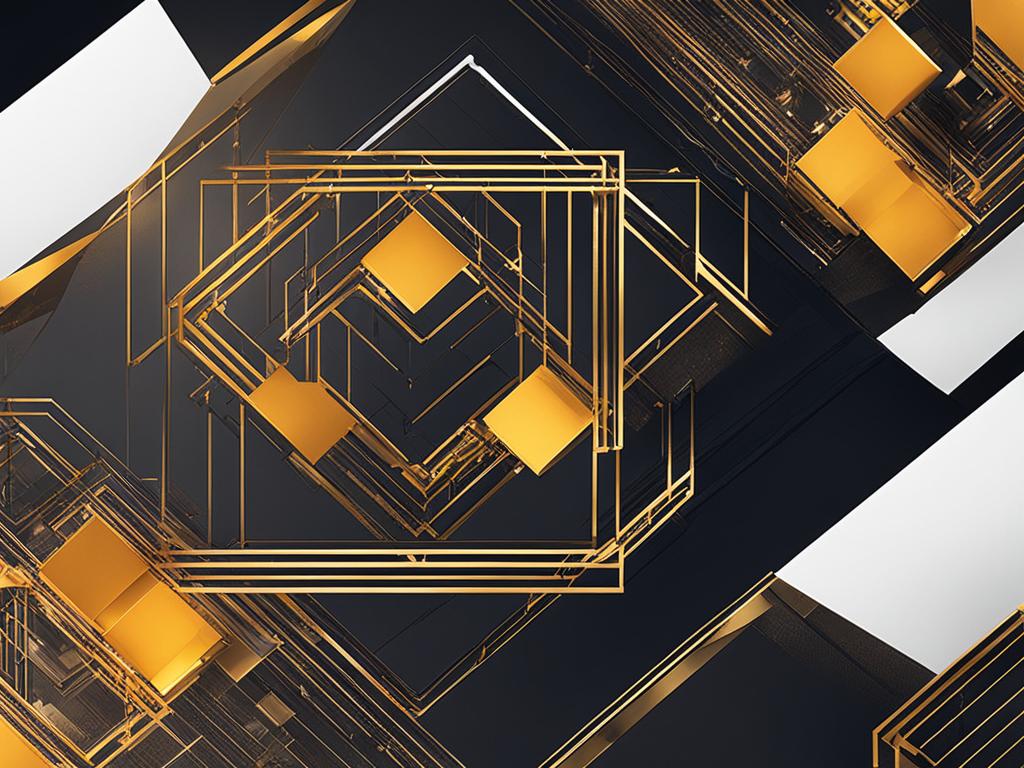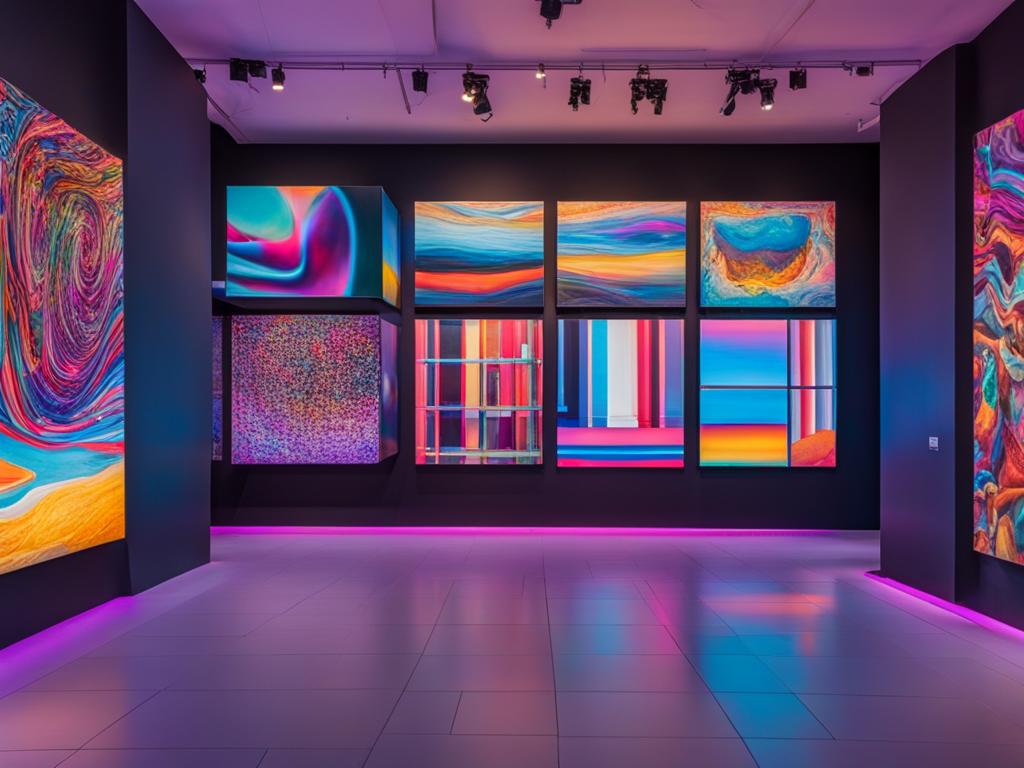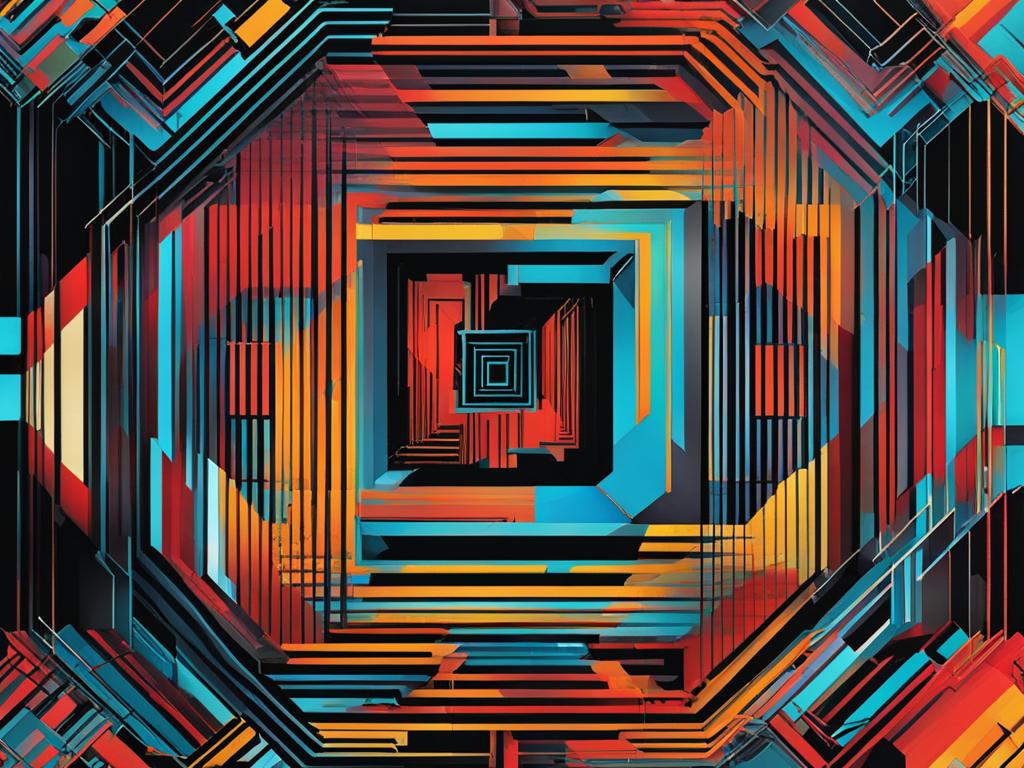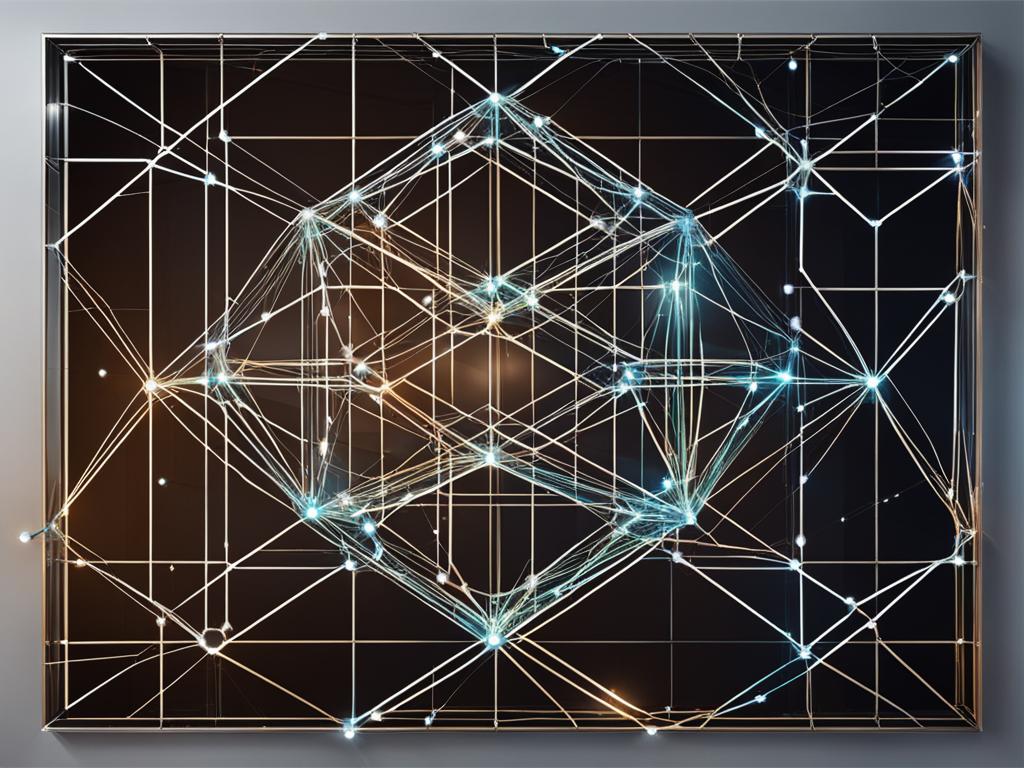In this comprehensive guide, I will take you through the process of creating blockchain art, providing you with a step-by-step tutorial on how to create your first piece. Blockchain art is a transformative innovation that has revolutionized the way we think about art, copyright protection, and provenance. By integrating blockchain technology with art, we can now create, tokenize, and sell unique digital assets, providing artists with greater control over their intellectual property than ever before.
If you’re a creative looking to learn how to create your first piece of blockchain art, then this guide is for you. Starting with the basics, we’ll explore what blockchain art is and the integration of Non-Fungible Tokens (NFTs) with blockchain. I’ll take you through the process of minting and selling your artwork on blockchain marketplaces, and provide you with tips and best practices to help you get started.
Whether you’re an artist looking to expand your creative horizons or a collector looking to invest in unique digital assets, this guide will equip you with the knowledge and tools you need to start creating blockchain art today. So, let’s get started on this exciting journey of blockchain art creation!
What is Blockchain Art?
Blockchain art is an innovative way for artists to create, sell, and store their artwork using blockchain technology. The process of creating art on the blockchain involves creating digital artwork, registering it on the blockchain, and selling it through various blockchain marketplaces.
Through the use of Non-Fungible Tokens (NFTs), artists can tokenize their work, providing authenticity and traceability. Each NFT represents a unique piece of artwork, allowing artists to maintain ownership and control over their creations. This process allows artists to protect their intellectual property while creating new revenue streams.
By using blockchain technology, artists can also ensure the authenticity of their artwork. Each piece of artwork is registered on the blockchain, ensuring that it cannot be duplicated or tampered with. This provides a level of transparency that is sorely lacking in the traditional art world.
The benefits of creating art on the blockchain are numerous. Not only does it provide artists with greater control over their work, but it also enables them to reach a wider audience. With blockchain, artists can sell their work directly to buyers, bypassing the need for galleries and brokers.
The blockchain art making process is a game-changer for artists in the digital age. It allows for greater transparency, ownership, and control over one’s artwork. As the art world continues to evolve, blockchain technology will undoubtedly play a significant role in its transformation.
The Integration of NFTs in Blockchain Art
The integration of Non-Fungible Tokens (NFTs) is one of the most significant developments in the art world, transforming the way we create, sell, and collect unique digital assets. NFTs are cryptographic tokens that are used to represent ownership of digital items such as art, music, videos, and more.
The use of NFTs in blockchain art has opened up new avenues for artists to monetize and share their creations. By tokenizing their work, artists can ensure the authenticity and ownership of their digital assets, addressing issues of copyright infringement.
Moreover, the integration of NFTs has revolutionized the art market as it creates new ways for artists to sell their work. With the use of NFTs, artists can sell limited edition or one-of-a-kind pieces, which cannot be replicated or duplicated. This scarcity creates a market where the value of the artwork can appreciate over time.
“NFTs have transformed the way artists think about their work as they are able to control the means of distribution and have an easily verifiable record of ownership and provenance. This transformation has come at a time when the art market seems to be increasingly relying on technology.”
In the blockchain art ecosystem, NFTs play a vital role in creating a transparent and secure marketplace, transforming the art world in unprecedented ways.
Comparing Traditional Art with Blockchain Art Integrated with NFTs
| Traditional Art | Blockchain Art Integrated with NFTs | |
|---|---|---|
| Ownership | Difficult to prove | Transparent and easily verifiable through NFTs |
| Authentication | Takes significant time and effort to ensure authenticity | Automated verification through blockchain and NFTs |
| Provenance | Can be challenging to trace the history of the artwork | Traceable through blockchain and NFTs, ensuring the authenticity and ownership of the artwork |
| Marketplace | Traditional galleries and auction houses | Decentralized marketplaces accessible globally |
The table above shows how blockchain art integrated with NFTs has transformed traditional art, making it more accessible, transparent, and decentralized.
Impact on Copyright and Provenance
Blockchain technology has transformed the way artists protect their intellectual property. It enables artists to prove ownership and establish the authenticity of their artwork. With blockchain, copyright protection is strengthened, and provenance is traceable, revolutionizing the art market and providing artists with greater control over their works.
Provenance refers to the history of ownership of a work of art. It includes information such as the artist, previous owners, exhibitions, and provenancecertificates.It is essential for establishing the authenticity of a piece and its market value. Blockchain ensures the traceability of provenance, preventing fraudulent sales and ensuring that buyers can trust the authenticity of an artwork.
By using blockchain technology, artists can not only protect their works but also gain greater control over the distribution and monetization of their art. They can determine who can access and use their work, assign royalties, and track every transaction involving their art.
“With blockchain technology, we can bring more transparency to the art market and provide artists with greater control over their works.”
Furthermore, blockchain technology allows for the creation of smart contracts, which can automate the process of royalty payments and ensure that artists receive fair compensation for their work. This is a significant development in the art world, as it promotes fair compensation and provides artists with greater financial stability.
In conclusion, blockchain technology has had a transformative impact on the art world, particularly in terms of copyright protection and provenance. It has revolutionized the way artists protect their intellectual property and gain greater control over the distribution and monetization of their art.
Understanding the Evolving Dynamics of the Blockchain Art Market
The world of blockchain art is constantly evolving, driven by changing market dynamics that present both opportunities and challenges. As more artists and collectors enter the blockchain art market, new trends emerge, and pricing dynamics shift.
At the heart of this market evolution lies the question of value. What factors influence the value of blockchain art, and how do these factors impact both artists and collectors?
To answer this question, let’s take a closer look at the current state of the blockchain art market. As of 2021, the most popular blockchain art marketplaces include OpenSea, SuperRare, Nifty Gateway, KnownOrigin, and Async Art. While these marketplaces share many similarities, each has its unique characteristics and strengths.
For instance, OpenSea is the largest and most diversified blockchain art marketplace, with thousands of artists and collectors from around the world. SuperRare, on the other hand, is more exclusive, with a curated selection of high-end digital artworks. Nifty Gateway is known for its limited-edition releases of NFTs designed by popular artists and celebrities.
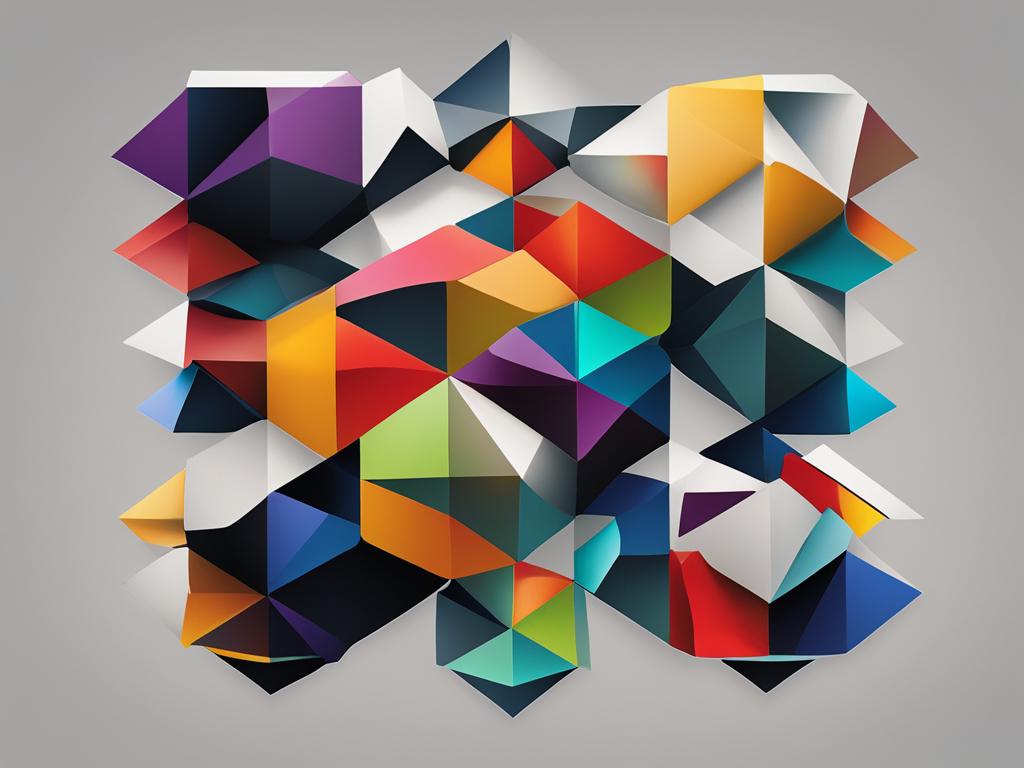
What’s more, the blockchain art market is highly influenced by emerging trends in the wider art world. For instance, in recent years, we have seen a rise in demand for generative and interactive art, which leverages blockchain technology to create highly unique, one-of-a-kind pieces.
However, as with any emerging market, the blockchain art market also faces challenges. One of the most significant barriers to growth is the lack of widespread adoption among traditional art institutions and collectors. While blockchain art has gained considerable attention and recognition in recent years, it still faces some skepticism from the established art world.
“The art world is slow to adopt new technologies, but I believe blockchain is a game-changer for the art industry,” says Rhonda E. Davis, artist and blockchain art enthusiast.
Despite these challenges, the potential for growth and profitability in the blockchain art market is immense. By understanding the evolving dynamics of this market and staying up-to-date on emerging trends, artists and collectors can position themselves for long-term success.
Getting Started with Blockchain Art Creation
Are you curious about entering the exciting world of blockchain art creation? In this section, I will offer you tips on how to get started and ways to produce high-quality blockchain art. Whether you’re an aspiring artist or new to the medium, the following guidelines will help you craft blockchain art that reflects your unique style and vision.
Tips for Creating Blockchain Art
Here are some of the tips to keep in mind when creating blockchain art:
- Stay true to your artistic passion and vision while also exploring innovative ways to incorporate blockchain technology into your work.
- Research the market and explore the types of blockchain art that sell and appeal to the public to help you better understand the preferences of collectors.
- Use high-quality tools and equipment to ensure the final product is presentable and professional-looking to attract potential buyers.
- Always mint your artwork to make it unique and distinguish it as an original piece of artwork.
Beginner’s Guide to Blockchain Art Creation
If you’re new to blockchain art, here is a beginner’s guide to get you started:
| Step | Description |
|---|---|
| Step 1 | Choose the appropriate blockchain platform for you to create your art. |
| Step 2 | Create your artwork using digital tools and techniques. |
| Step 3 | Mint your artwork and store it on a blockchain platform. This is necessary to distinguish it as a unique piece of artwork. |
| Step 4 | Sell your artwork on blockchain marketplaces. |
Through this process, you can produce and sell your artwork with ease while ensuring its authenticity, ownership, and traceability through blockchain technology.
Best Practices for Making Blockchain Art
To create high-quality blockchain art, it is necessary to follow some best practices:
- Experiment with your artwork to discover your style and preferences.
- Use high-quality equipment and tools for optimal results.
- Create unique and authentic artwork that reflects your identity.
- Ensure that you know the copyright laws to protect your artwork and gain financial benefits.
By following these tips and practices, you can start creating blockchain art that appeals to collectors and showcases your ability as an artist. Make sure to experiment with generative art, interactive art, and VR art that leverage the capabilities of blockchain technology to unleash your creativity further.
Exploring Blockchain Art Creation Techniques
Blockchain technology has opened up a world of possibilities for artists eager to explore new techniques and mediums. Here are some intriguing blockchain art creation techniques to try:
- Generative art: This technique creates art through algorithms, using predefined rules to generate unique and dynamic visuals. By incorporating blockchain technology, generative art can create immutable and traceable digital works of art. An excellent example is Maddog Jones’s The World At Your Feet.
- Interactive art: For artists looking to create a more immersive experience, interactive art allows for active engagement with the artwork. Blockchain technology can bring a new level of authenticity and ownership to interactive art, allowing artists to track and monetize the use of their creations. Examples of interactive blockchain art include The Sci-Fi Boxes by 007.
- Virtual Reality (VR) art: With the rise of VR technology, artists can now create artworks that exist within a digital space. Through blockchain integration, VR art can become valuable digital assets with provenance and authenticity tracked in perpetuity. For example, take a look at Grimes’s NFT work, “i am ai”.
Experimenting with these techniques can help artists unleash their creativity and push the boundaries of traditional art. Each technique has its unique advantages and requires different skills to master, but with blockchain technology, artists can make their creations truly one-of-a-kind.
Mastering the Art of Blockchain Creation
Becoming a proficient blockchain artist requires both practice and experimentation. If you’re new to the world of blockchain art, it can be helpful to start with simple projects and gradually work your way up to more complex pieces.
Some tips for mastering the art of blockchain creation include:
- Refining your artistic style: Take the time to hone your unique artistic style and find ways to incorporate it into your blockchain art. This will help your creations stand out and make a lasting impression on viewers.
- Exploring different blockchain platforms: Experiment with various blockchain platforms and tools to find the ones that work best for your projects. Some popular options include Ethereum, EOS, and TRON.
- Building a brand: Establish a distinct brand and style for your blockchain art. This can help you cultivate a following and stand out from other artists in the blockchain community.
“The best way to learn is by doing. Start small and work your way up, focusing on refining your style and experimenting with different tools and platforms.”
In summary, mastering the art of blockchain creation takes time and dedication. By refining your artistic style, exploring different platforms, and building a brand, you can produce truly unique and impactful pieces of blockchain art.
The Future of Blockchain Art
As the blockchain art market continues to grow, the future looks bright for artists and collectors alike. The integration of blockchain with NFTs has already transformed the art world, providing greater ownership, traceability, and authenticity. But what lies ahead for blockchain art?
One exciting trend is the rise of generative art, which uses algorithms to create unique and dynamic works of art. With blockchain technology, generative artists can ensure that each artwork is one-of-a-kind and cannot be replicated. Another trend is the emergence of virtual reality (VR) art, which offers new possibilities for immersive and interactive experiences.
But the future of blockchain art is not without its challenges. As the market becomes more crowded, artists and collectors will need to differentiate themselves to stand out. Additionally, there may be regulatory and legal hurdles to overcome, particularly around issues of copyright and ownership.
Nevertheless, the potential for blockchain art is immense. As the technology continues to evolve, we can expect to see new and innovative use cases emerge. Whether it’s creating art that responds to real-time data, using blockchain to fund and distribute art projects, or integrating blockchain into physical art installations, the possibilities are endless.
In conclusion, the future of blockchain art is full of promise, excitement, and potential. As an artist, collector, or enthusiast, now is the time to get involved and explore the possibilities of this transformative technology.

